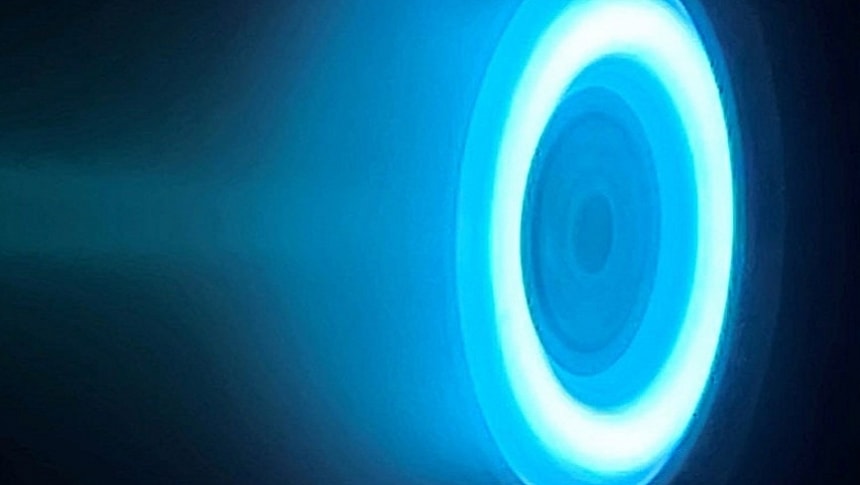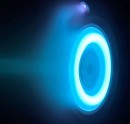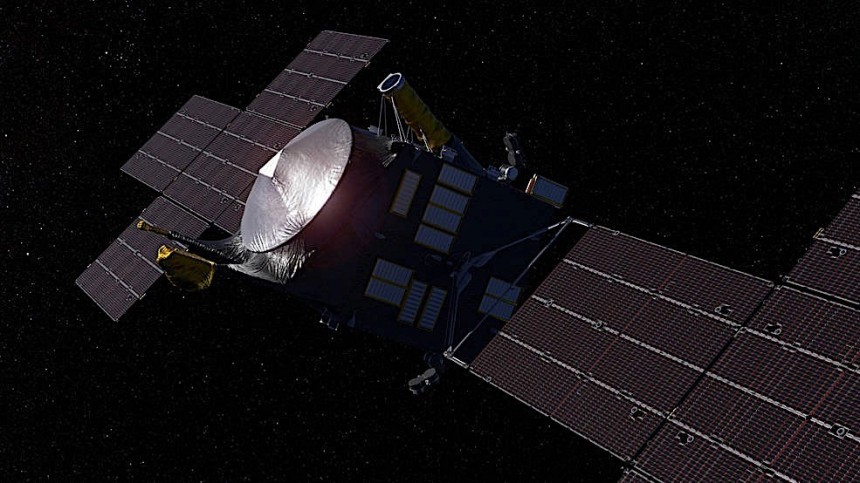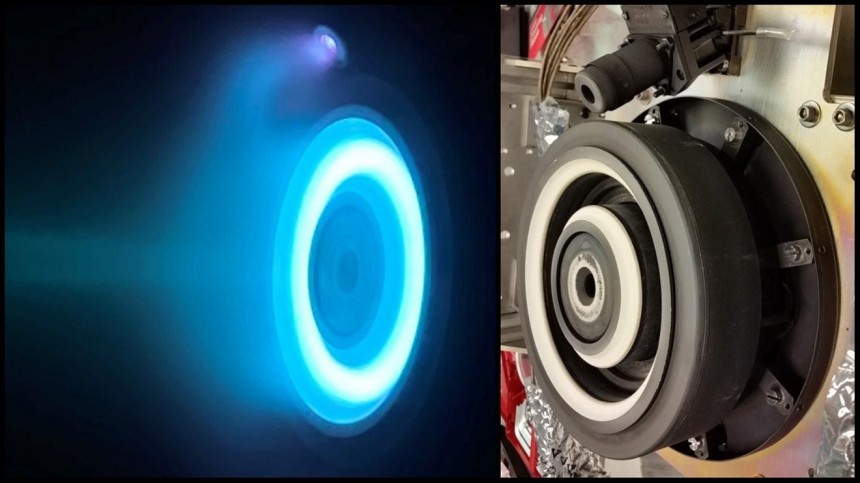The thing with long-duration space missions is that just when you're about to forget all about them, some crucial update reaches your eyes and ears, bringing said mission back into the spotlight. Just like it happened last week with something called Psyche.
First and foremost Psyche is the name of one "of the most intriguing objects in the main asteroid belt." An asteroid itself, the potato-shaped piece of floating debris is believed to be extremely rich in metal, with between 30 and 60 percent of its body made of such materials.
Given all that, chances are Psyche is not technically an asteroid, but the partial core of a planetesimal, which are the building blocks of an early planet. Knowing more about this place would give us humans a better understanding of the origins of the solar system and our place in it.
The place is so interesting that NASA devised a special mission to go out there and find out more. The spacecraft tasked with this mission is also called Psyche, it is the size of a tennis court, and it was launched in October last year from the Kennedy Space Center in Florida atop a SpaceX Falcon Heavy rocket.
Now, Psyche the asteroid is located three times farther away from the Sun than our own planet, or over 257 million miles (413 million km) further out from Earth, in the vast space between Mars and Jupiter. That means Psyche the spacecraft would need until 2029 (until recently the set date was 2028) to reach its destination.
Normally such a long flight would be quite boring for the rest of us, not directly involved with the mission, but Psyche is far from being a simple explorer. It is also a testbed for various other technologies and systems, and that's why even from launch it has constantly been in the news.
One of the new tech the spacecraft is meant to test is the so-called Deep Space Optical Communications (DSOC). That's a bit of hardware meant to demonstrate that lasers can be used to facilitate communication over large distances, and at a much higher rate than present-day radio frequency systems.
The most recent test of the DSOC system, performed back in April, meant the spacecraft sent back data at a rate of 267 Mbps from a distance of 140 million miles (226 million km). The data package from the previous tests included, among other things, digital versions of Arizona State University's Psyche artwork, and a 15-second video about a cat named Taters.
Another piece of technology Psyche is meant to test, this time in a more active manner, is the solar electric propulsion system it uses.
After departing Earth, Psyche used the momentum provided to it by the carrier rocket to sort of coast its way past the orbit of planet Mars. Now that it passed that point, the solar electric propulsion system has come online to accelerate the ship. And it has been at it doing this for a while now, with plans to do so "nonstop" in the immediate future.
The propulsion tech comprises large solar arrays meant to capture sunlight and convert it into electricity. This, combined with the ship's propellant, xenon, being shot out through Psyche's thrusters, is what makes travel deeper into Sol possible.
When xenon charged atoms are expelled through the thrusters, "a brilliant blue glow that trails behind the spacecraft" is emitted, making for a celestial spectacle the likes we rarely get to see.
According to NASA, "the thrust created by the ionized xenon is gentle, but it does the job" of moving the ship forward in its current cruise mode. In numbers, the spacecraft presently moves at a speed of 84,000 mph (135,000 kph), but because there's no atmospheric drag to slow it down, acceleration build-up will eventually allow it to hit up to 124,000 mph (200,000 kph).
Psyche is presently located at a distance of 190 million miles (300 million km) from our world. It's only six months or so into its six-year+ mission, but further interesting events lie on the horizon in the meantime.
In 2026, for instance, the nature of Psyche's trajectory will bring it back toward Mars, allowing it to make a close flyby of the Red Planet. Its ion thrusters will shut down at that point, as the ship will use Mars' gravity for a slingshot maneuver
Once in orbit around the namesake asteroid, it will start collecting data for a period of up to two years. For the task at hand it will use a series of instruments, including a gamma ray and neutron spectrometer, a multispectral imager, and a magnetometer.
All these instruments have already been powered up and put through their paces. The magnetometer and the two spectrometers, for instance, already detected a solar eruption of charged particles, while the imager (which is a fancy name for a pair of cameras) snapped a total of 68 pics of a star field in the constellation Pisces.
Psyche will never return home, and it's unclear at this point if it will still have enough kick left in it to be remotely repurposed for some other mission.
Given all that, chances are Psyche is not technically an asteroid, but the partial core of a planetesimal, which are the building blocks of an early planet. Knowing more about this place would give us humans a better understanding of the origins of the solar system and our place in it.
The place is so interesting that NASA devised a special mission to go out there and find out more. The spacecraft tasked with this mission is also called Psyche, it is the size of a tennis court, and it was launched in October last year from the Kennedy Space Center in Florida atop a SpaceX Falcon Heavy rocket.
Now, Psyche the asteroid is located three times farther away from the Sun than our own planet, or over 257 million miles (413 million km) further out from Earth, in the vast space between Mars and Jupiter. That means Psyche the spacecraft would need until 2029 (until recently the set date was 2028) to reach its destination.
Normally such a long flight would be quite boring for the rest of us, not directly involved with the mission, but Psyche is far from being a simple explorer. It is also a testbed for various other technologies and systems, and that's why even from launch it has constantly been in the news.
The most recent test of the DSOC system, performed back in April, meant the spacecraft sent back data at a rate of 267 Mbps from a distance of 140 million miles (226 million km). The data package from the previous tests included, among other things, digital versions of Arizona State University's Psyche artwork, and a 15-second video about a cat named Taters.
Another piece of technology Psyche is meant to test, this time in a more active manner, is the solar electric propulsion system it uses.
After departing Earth, Psyche used the momentum provided to it by the carrier rocket to sort of coast its way past the orbit of planet Mars. Now that it passed that point, the solar electric propulsion system has come online to accelerate the ship. And it has been at it doing this for a while now, with plans to do so "nonstop" in the immediate future.
The propulsion tech comprises large solar arrays meant to capture sunlight and convert it into electricity. This, combined with the ship's propellant, xenon, being shot out through Psyche's thrusters, is what makes travel deeper into Sol possible.
When xenon charged atoms are expelled through the thrusters, "a brilliant blue glow that trails behind the spacecraft" is emitted, making for a celestial spectacle the likes we rarely get to see.
Psyche is presently located at a distance of 190 million miles (300 million km) from our world. It's only six months or so into its six-year+ mission, but further interesting events lie on the horizon in the meantime.
In 2026, for instance, the nature of Psyche's trajectory will bring it back toward Mars, allowing it to make a close flyby of the Red Planet. Its ion thrusters will shut down at that point, as the ship will use Mars' gravity for a slingshot maneuver
Once in orbit around the namesake asteroid, it will start collecting data for a period of up to two years. For the task at hand it will use a series of instruments, including a gamma ray and neutron spectrometer, a multispectral imager, and a magnetometer.
All these instruments have already been powered up and put through their paces. The magnetometer and the two spectrometers, for instance, already detected a solar eruption of charged particles, while the imager (which is a fancy name for a pair of cameras) snapped a total of 68 pics of a star field in the constellation Pisces.
Psyche will never return home, and it's unclear at this point if it will still have enough kick left in it to be remotely repurposed for some other mission.










